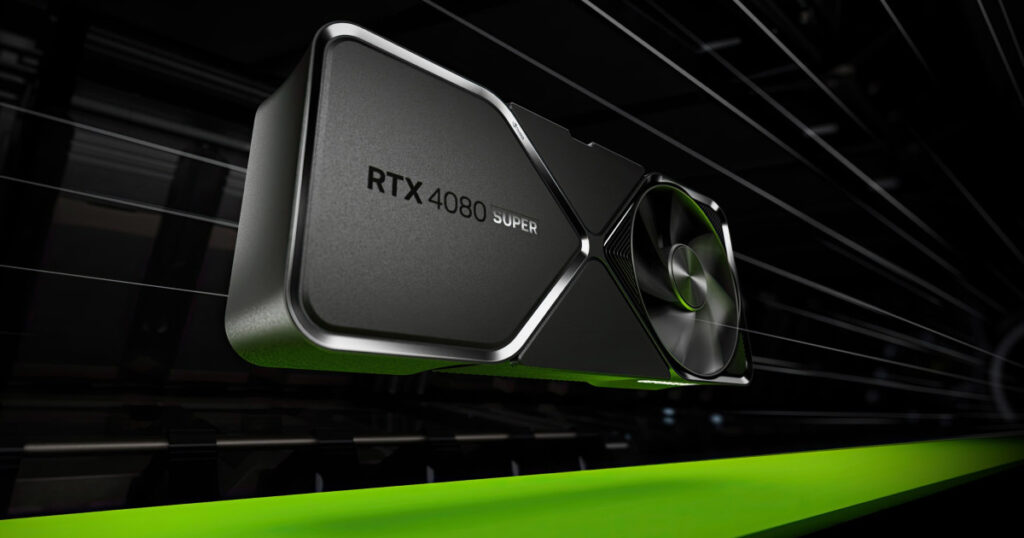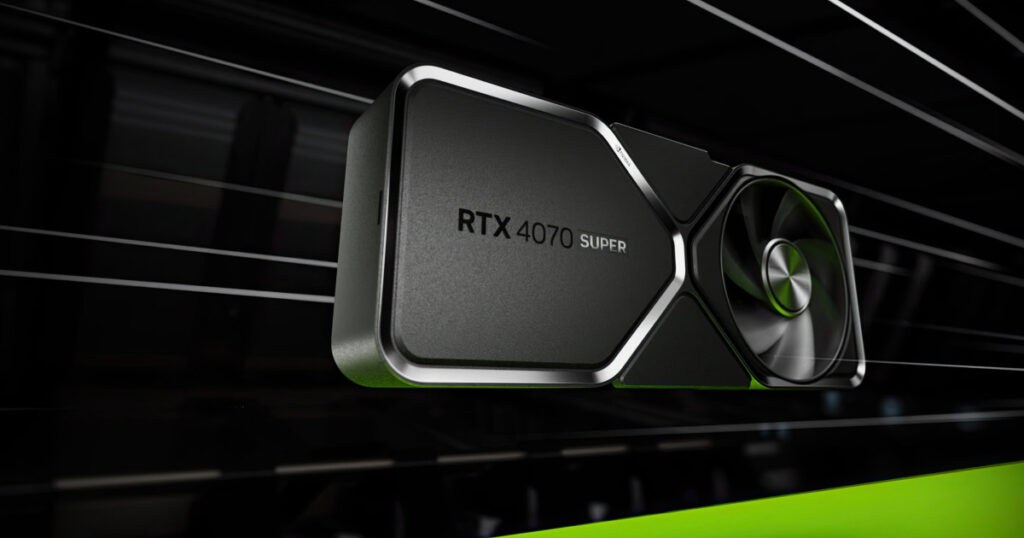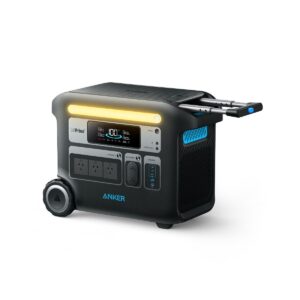The Anker 767 PowerHouse is an aptly named portable power station that leans more into power than it does portability.
Anker 767 PowerHouse power station review
Power outages. There’s never a good time for one. But when a planned power outage is heading your way, there’s no need to return to the Dark Ages. A power station like the Anker 767 PowerHouse is a handy way to offer extra peace of mind. Given it’s built with portability in mind, the Anker 767 PowerHouse is also designed to travel with you. Here’s how the Anker 767 PowerHouse fared after hours of testing in inside and outdoor conditions.
Anker 767 PowerHouse value for money
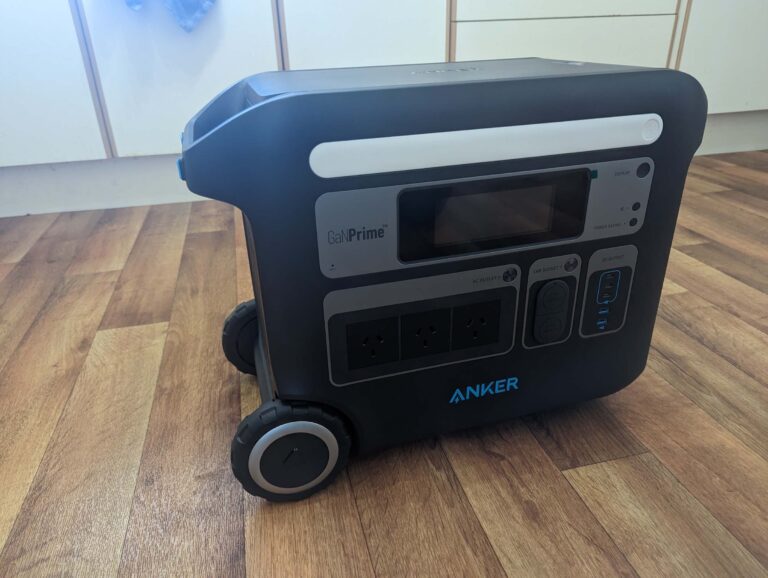
It’s tricky to get past the shadow cast by that hefty RRP. At an asking price of $3,699.95, the Anker 767 PowerHouse is targeted at those who will drain a lot of value out of such an exy fee. That means you’re someone who lives in an RV, works from a modified van or bus, camps a lot (with ongoing power requirements) or someone who’s willing to pay a lot for home backup.
Looking up power stations on Bunnings shows that the Anker 767 PowerHouse is more than $1,000 more than its closest competitor, the Zendure Portable Rechargeable Power Station. Like the Anker 767 PowerHouse, the Zendure power station also includes a retractable handle and is compatible with solar charging. The Zendure power station also has a slightly larger capacity of 2,096Wh vs the PowerHouse’s 2,048Wh. Admittedly, the Zendure is a US import with US power outlets, which makes it less convenient.
The other cost consideration is that while the Anker 767 PowerHouse is solar compatible, it doesn’t come with solar panels. You can still charge via mains electricity or vehicle AC power port but you’ll have to invest in compatible solar panels if you want solar as a charging option.
Anker 767 PowerHouse design and setup
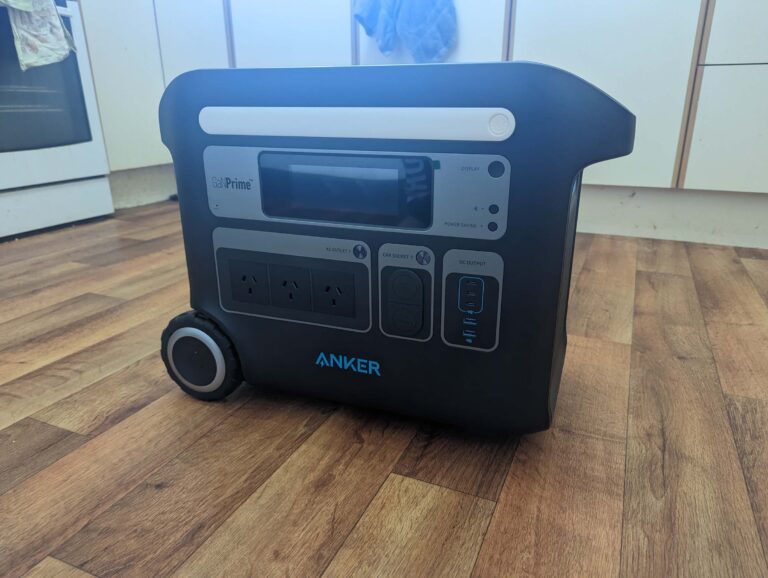
The first thing I noticed about the Anker 767 PowerHouse was the heft. Weighing in at 30.5kg, I highly advise getting a second pair of hands to help with unboxing… and anywhere else you want to lug the power station. As a portable power station, Anker has handily included a couple of carrying handles, which is basically best treated as a fully loaded Esky carried between two people.
Cleverly, there’s also a retractable handle, multi-surface wheels and an overall durable design that makes the Anker 767 PowerHouse as at home outdoors as it is, well, at home. There are three AC ports for compatible powered devices, plus three USB-C ports, two USB-A ports and two car outlets.
That’s a lot of versatility for an admittedly chonky device. The only thing I think it’s missing at this price point is at least one wireless charging pad on top. Admittedly, that’s where the expandable battery is meant to sit if you have bigger power requirements (at an extra fee). There are charging ports on the back of the power station, including solar and a mains power input.
As for setup, there’s no real configuration required. Tap the Display button on the front to see power levels as well as power output (and input if you’re charging) alongside device temperature and an estimate of the remaining hours of juice. To make life easier, download the Anker App for similar on-demand metrics alongside control over enabling/disabling power for the AC outlet and car socket ports.
Anker 767 PowerHouse everyday testing
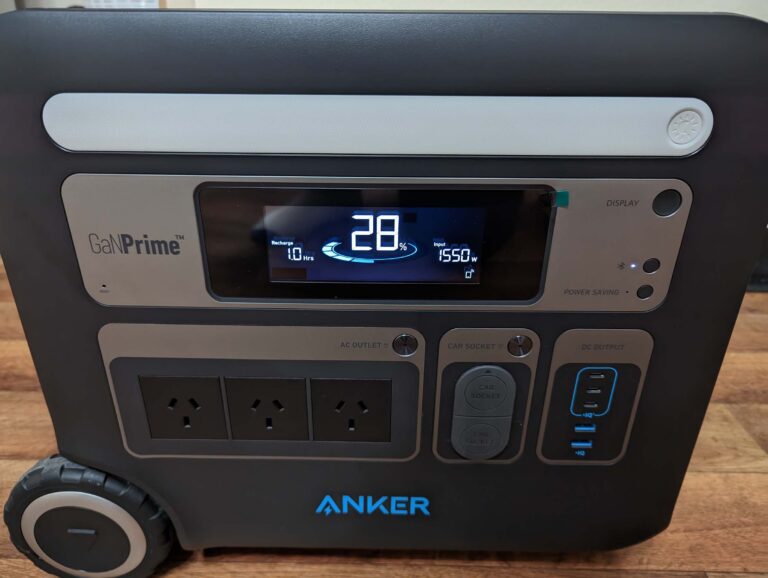
I tested the Anker 767 PowerHouse inside and outside my apartment. Inside, I was particularly interested in an overnight test with my CPAP machine. Typically, I use mains power for my CPAP machine, except when Ausgrid notifies me of a potential power outage in my area. In those rare instances, I use a backup battery specifically designed for my CPAP machine.
The thing is, using that backup battery disables the humidifier, which leaves me with Me, Myself and Irene levels of dry mouth. A powered source is preferable, which is where the Anker 767 PowerHouse steps in because it acts like a power outlet. My overnight test involved connecting a bedside lamp and CPAP machine before sleep. The Anker 767 PowerHouse measured a max of 70W output and, with 56% battery life at the time, estimated 22.6 hours remaining. That’s a lot of spare juice for a limited-wattage scenario.
About seven hours later, I woke up from a mostly undisturbed sleep and the Anker 767 PowerHouse had 32% juice left with an estimated 16 hours remaining at that wattage. Not bad. The main con for my overnight test was an internal cooling fan that sporadically kicks in to keep the Anker 767 PowerHouse cool. I measured a max reading of 50dB in the morning with my Google Pixel 7 Pro placed on top of the Anker 767 PowerHouse.
The other detractor is the size of the Anker 767 PowerHouse, which means it doesn’t sit easily atop a bedside table nor slot neatly next to my bed without having to step over it. If this is an issue for your intended use case, I highly recommend shifting it to a more practical position and using a power extension cord. Admittedly, that creates a different kind of potential trip hazard.
It was a lot easier to slot the Anker 767 PowerHouse under my computer desk for some more intensive wattage testing. I connected my full PC setup, which includes a high-end desktop tower (with an Nvidia GeForce RTX 4080 inside), three monitors, a Creative Sound Blaster Katana V2 soundbar, a powered USB hub and a Synology DS920+ NAS. Yeah, that’s a lot. With 100% charge on the PowerHouse, the power station estimated between 3.5 and six hours when the output was hanging around 330-ish watts during everyday use. After two hours of use, there was 65% capacity left with 3.5 hours left at 321W.
At 63% capacity, I jumped into a full-blown gaming test. The Anker 767 PowerHouse started at 23 degrees Celsius and estimated three hours left at a base of 356W. During my half-hour play session with resource-demanding Control and 623W max power draw, capacity was down to 47%, the heat was only up slightly at 25 degrees and there were an estimated two hours and six minutes left with an out-of-game 361W power draw.
With everything powered off including the NAS, my computer setup was still drawing 50W of phantom power. While that’s not a lot of juice for, admittedly, a whole lot of power draw, the Anker 767 didn’t skip a beat and never made me feel like I shouldn’t be running my rig off a power station.
Anker 767 PowerHouse charging and versatility
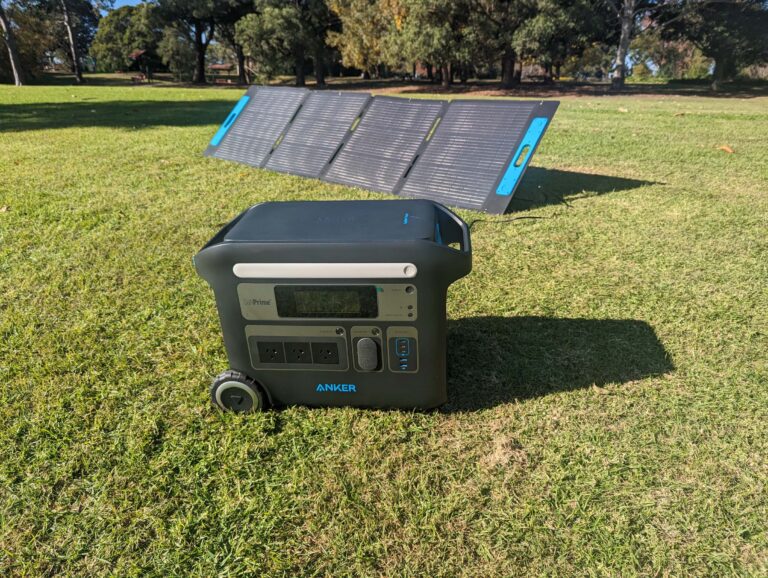
I was also sent a 200W Anker 531 Solar Panel to test solar charging with the Anker 767 PowerHouse. Note that this is an extra cost that wasn’t available in Australia at the time of writing but is priced at a not-too-cheap US$549. The solar panel has three easy-to-position angles and was intuitive to configure once I found the port on the back of the panels.
During a half-hour charge on a sunny day, the Anker 767 PowerHouse was drawing up to 154W max power with an estimated recharge time of just shy of seven hours with a 52% charge. It’s winter in Australia at the time of writing, so the prospect of a 14-hour charge when there are only around 10 hours of sunlight isn’t ideal. That said, you can always pay more for up to a 1,000W solar panel for faster recharge times. The display on the Anker 767 PowerHouse is also tricky to see in full sunlight, with or without sunglasses, so the companion app is highly recommended outdoors.
Speaking of the companion app, I was unable to determine how much power draw was being used by the Bluetooth connectivity once I synced with my phone. Whenever I fired up the Anker App, the Anker 767 PowerHouse stats were ready to use, which means Bluetooth is constantly running in the background. Practically, Bluetooth doesn’t draw a whole lot of power on devices like smartphones. Still, I bring it up because there were some unexplained discharges: 3% in the couple of hours between unboxing and solar-panel testing and a 5% discharge in the 12 hours between the end of my CPAP testing and when I started recharge testing.
Those aren’t exactly insignificant percentages of charge to be losing when the Anker 767 PowerHouse isn’t in active use. Admittedly, there was a firmware update I installed upon initial testing and another one that came through towards the end of my testing, which hopefully addresses this drain.
Speaking of charging, the Anker 767 PowerHouse is a beast when it comes to charging via mains electricity. I started my recharge test at 27% capacity, and it was at 100% around an hour later, charging at a blistering 1500W. Anker claims 0% to 80% charge in an hour, so I can only assume there’s a slower charge in the last 10% or so to preserve battery longevity (the Anker 767 has a 10+ year lifespan).
Is the Anker 767 PowerHouse worth buying?
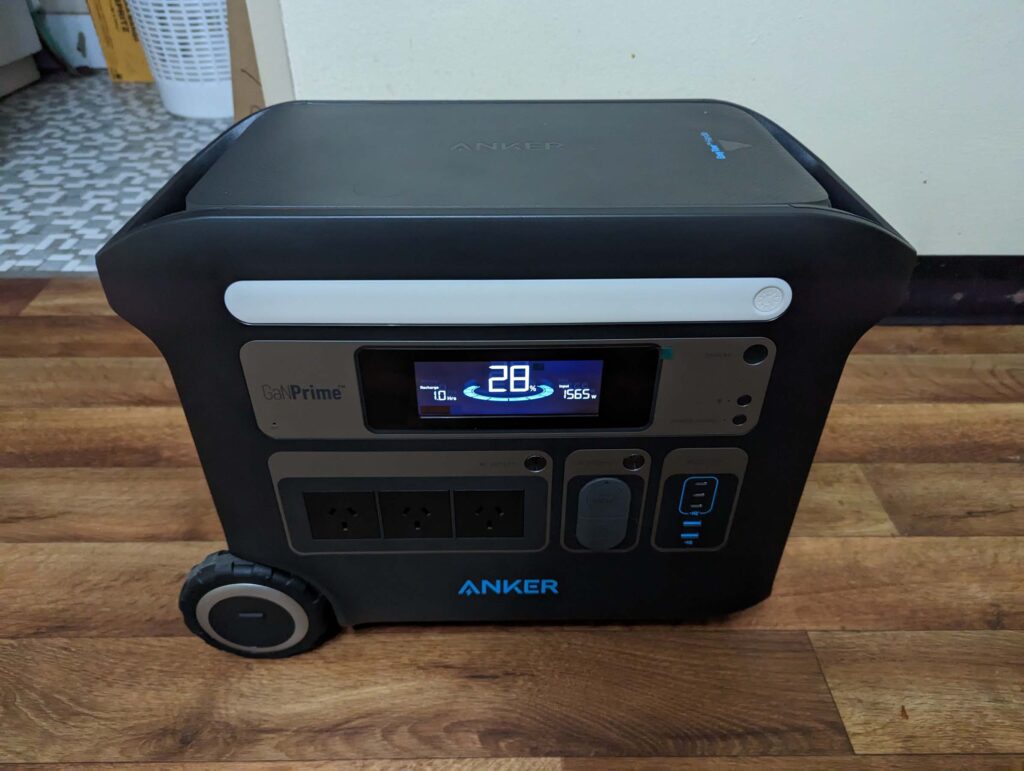
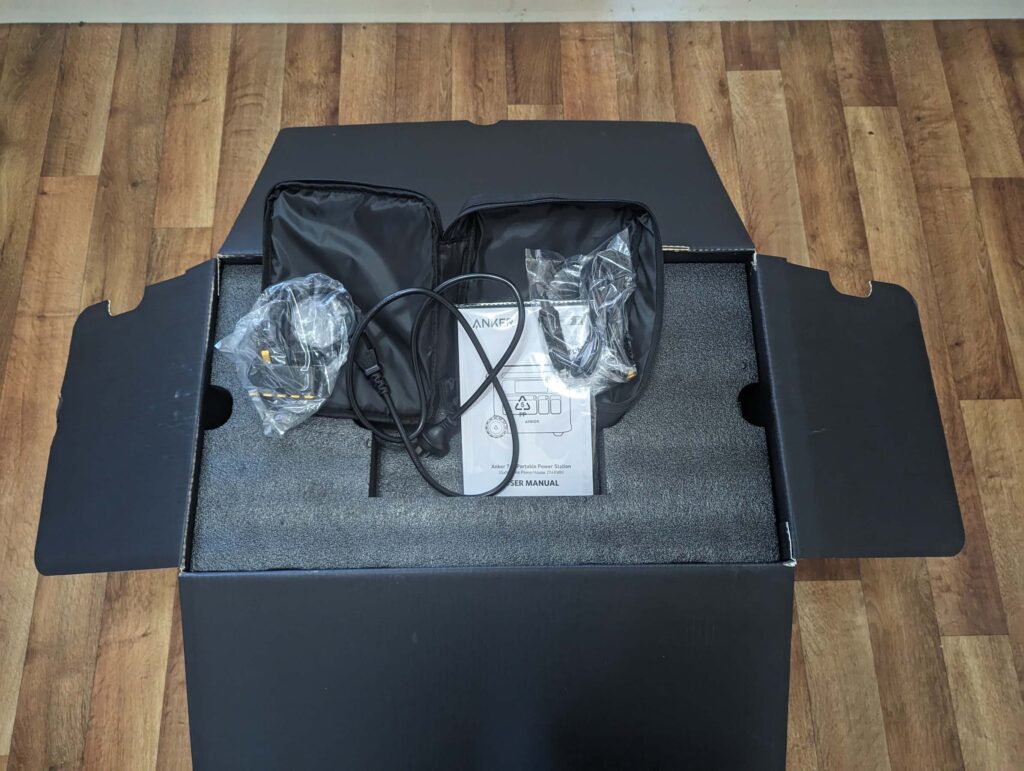
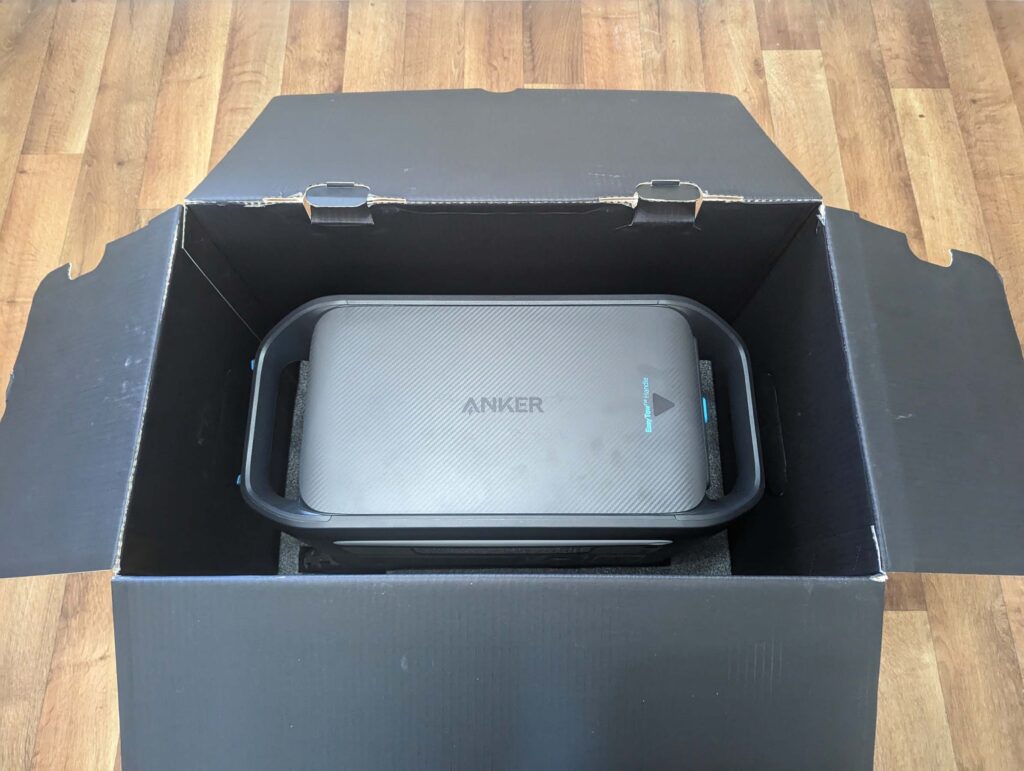

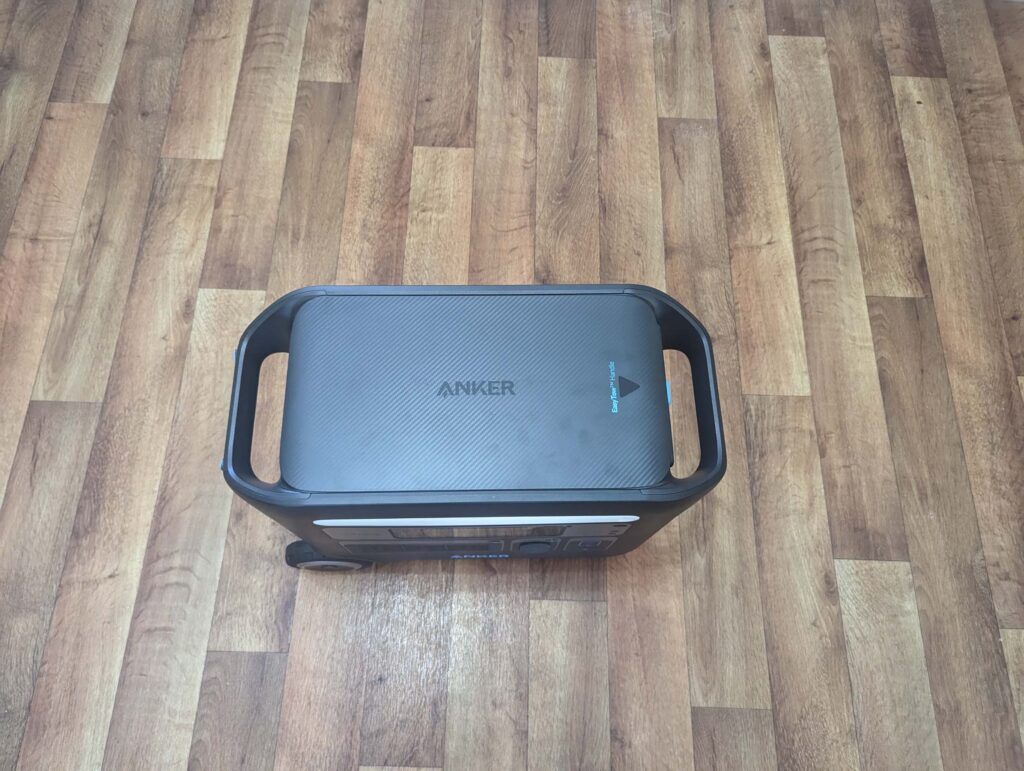



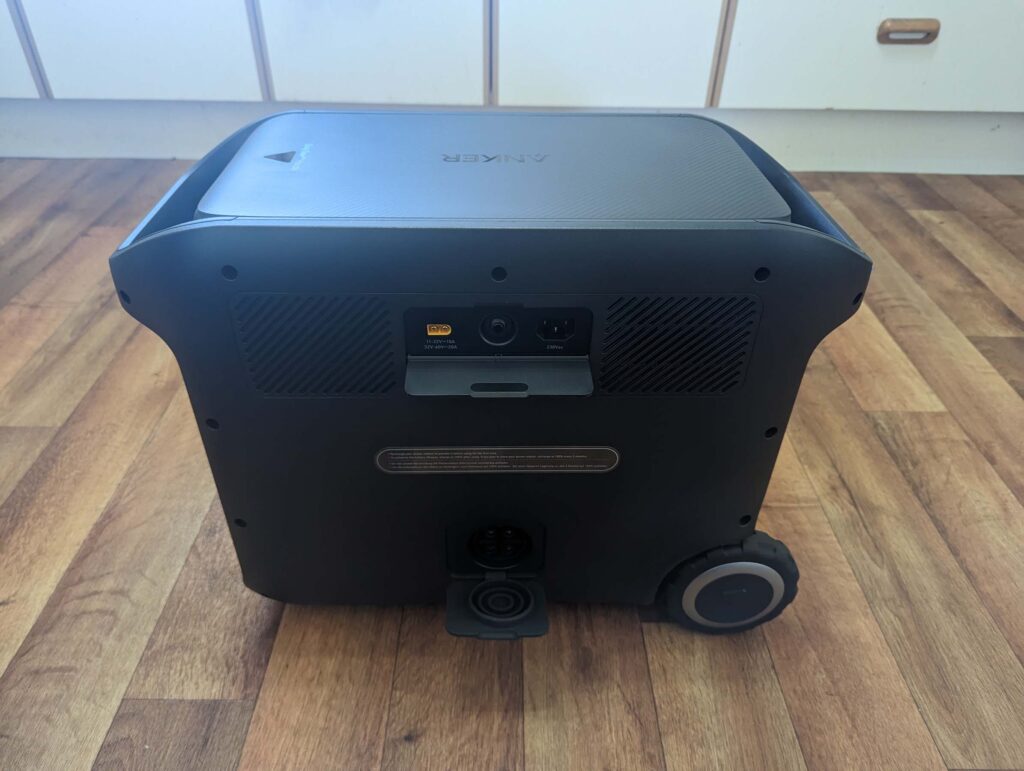
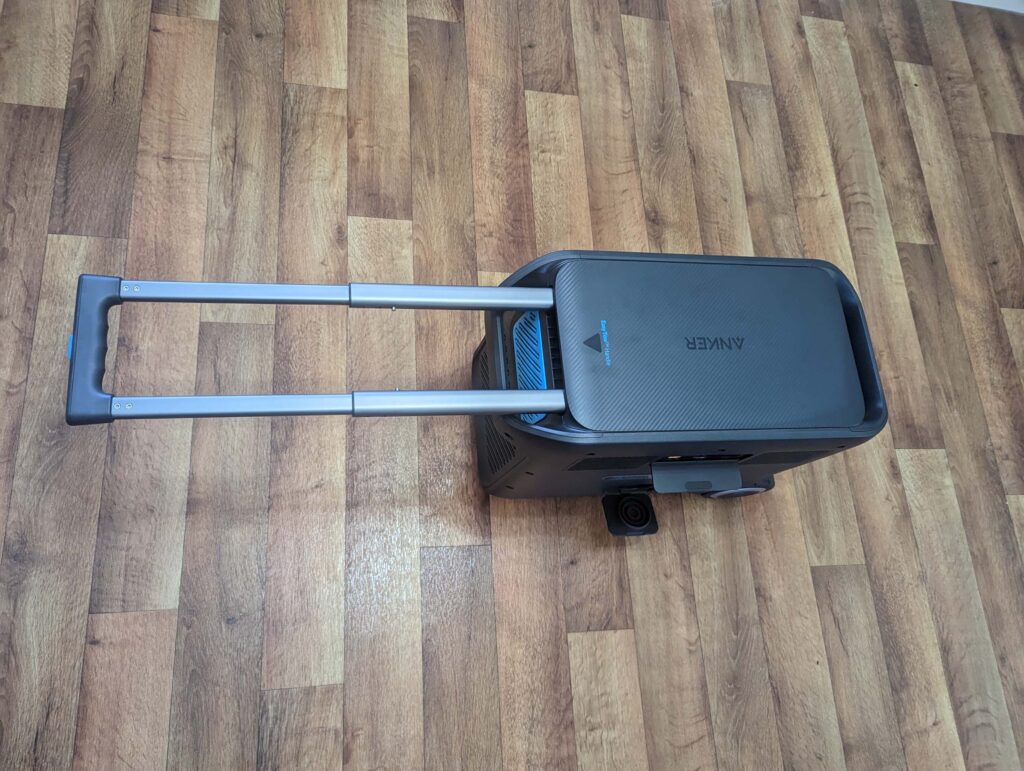

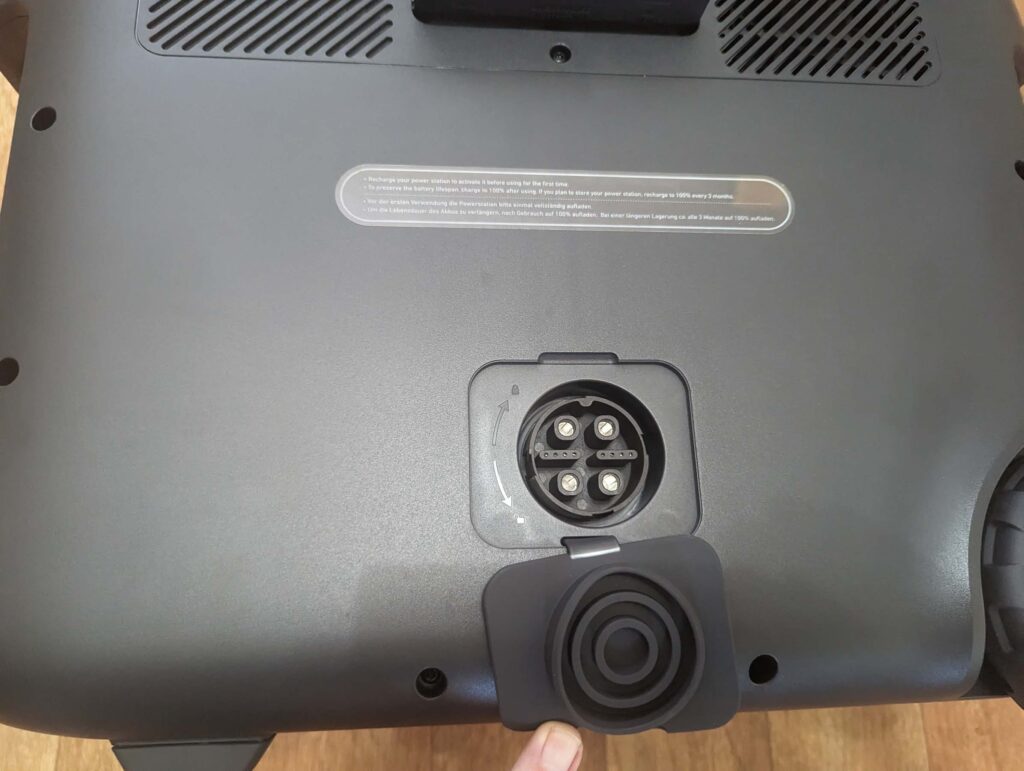
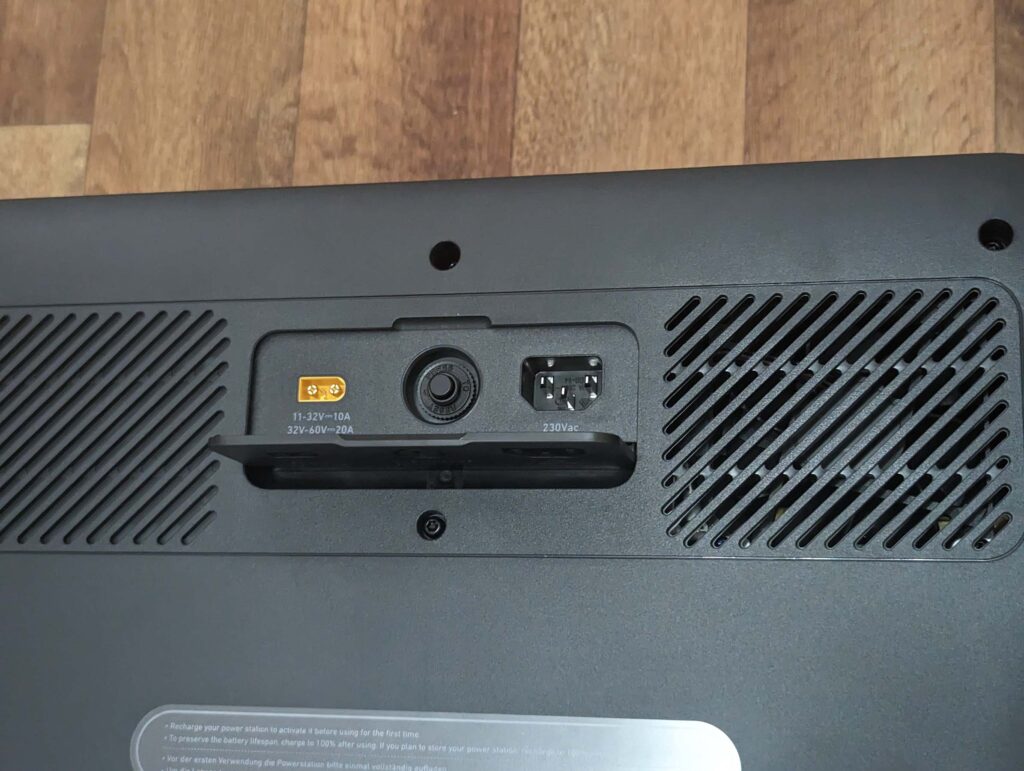


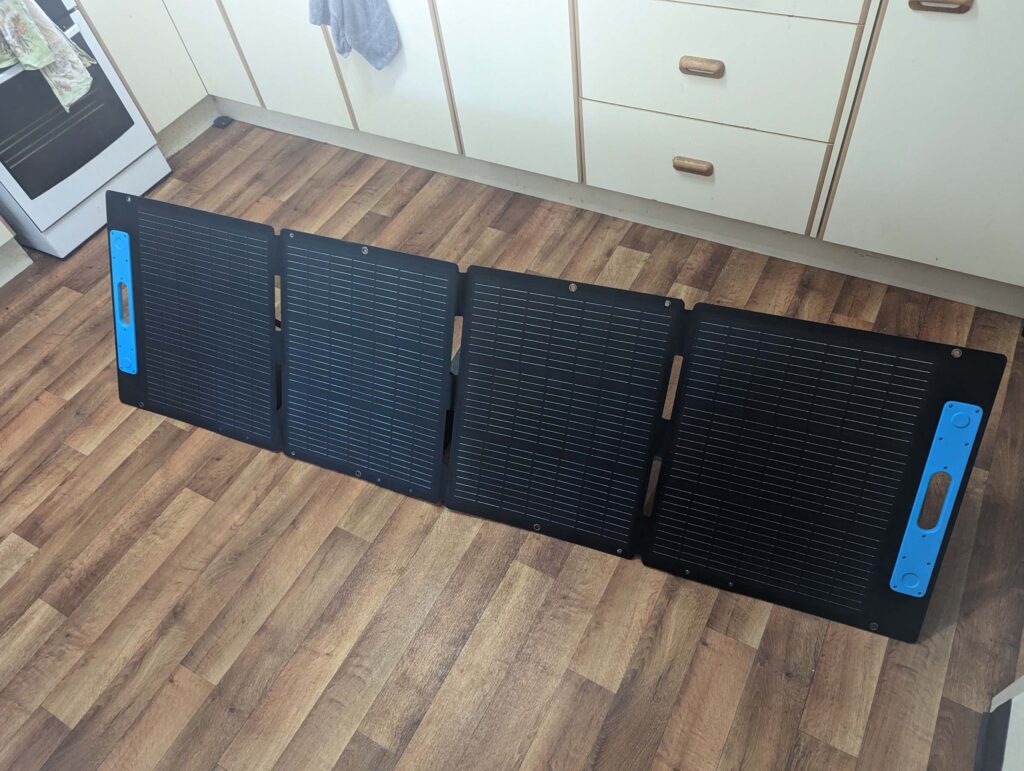
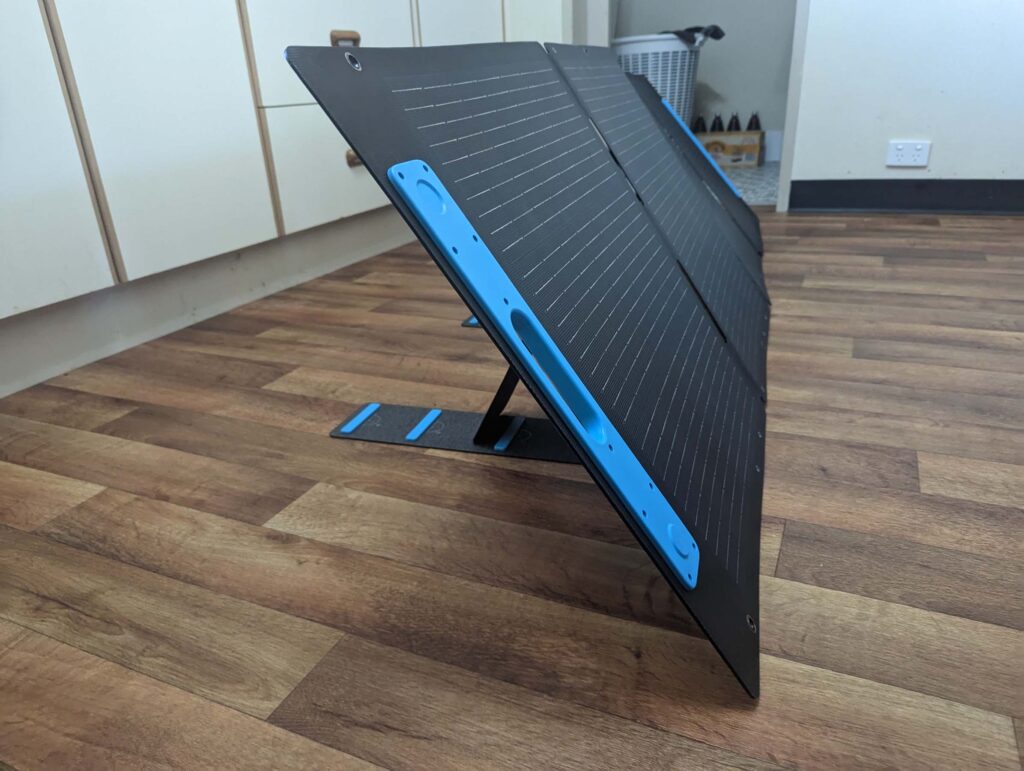

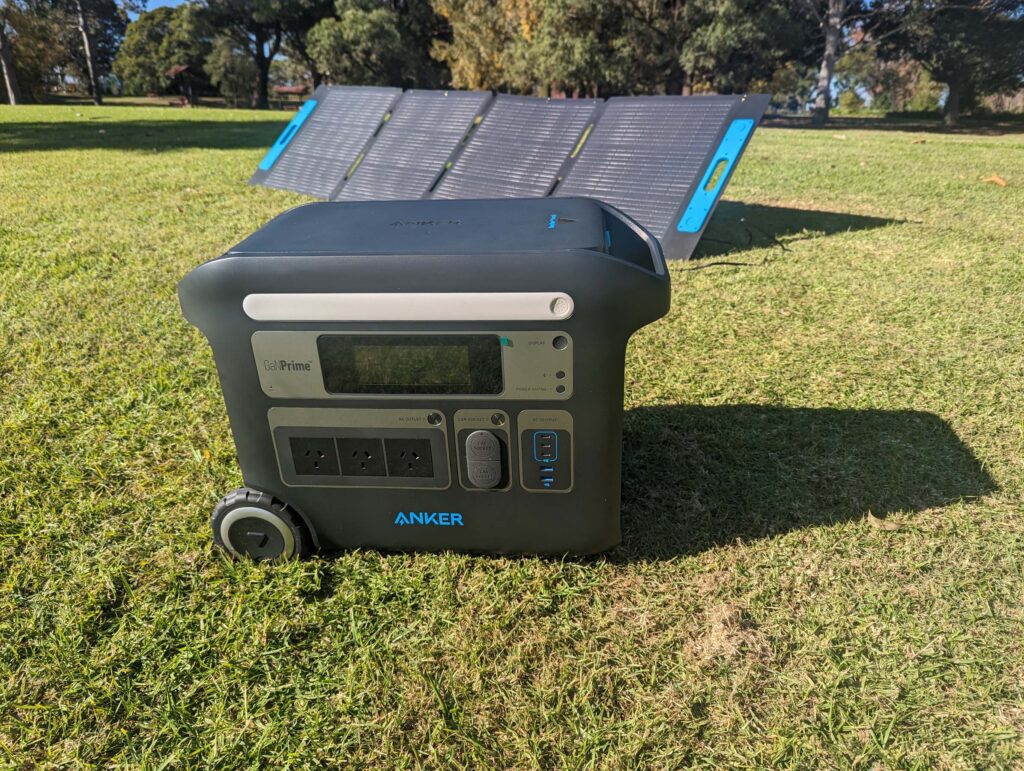
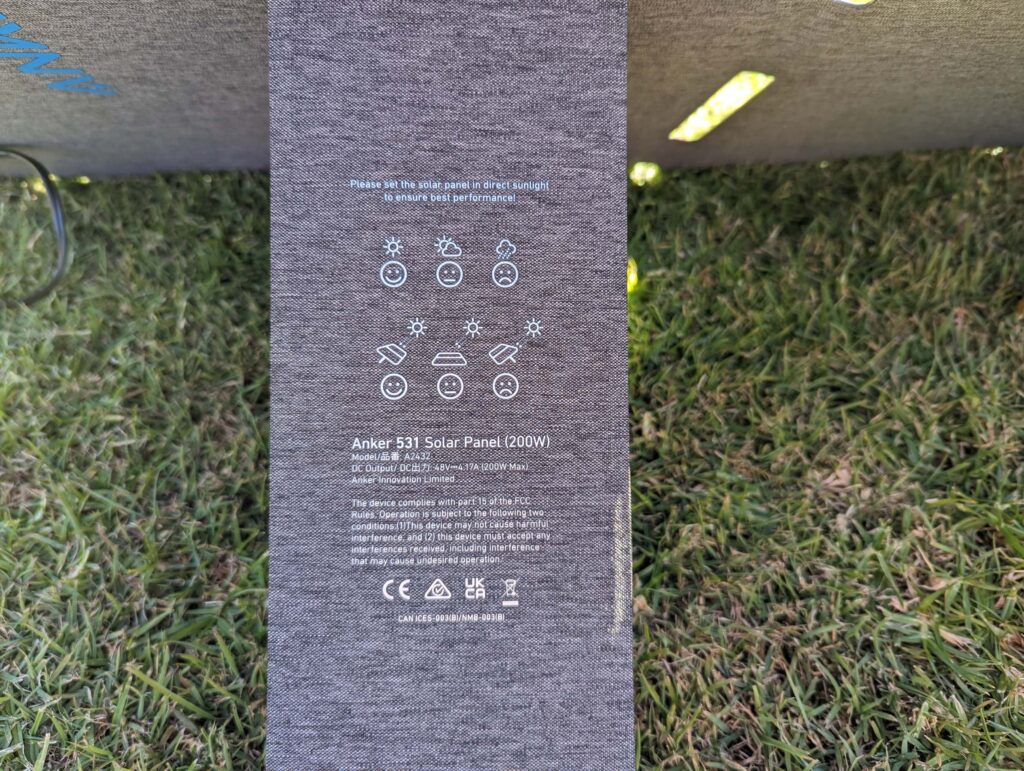

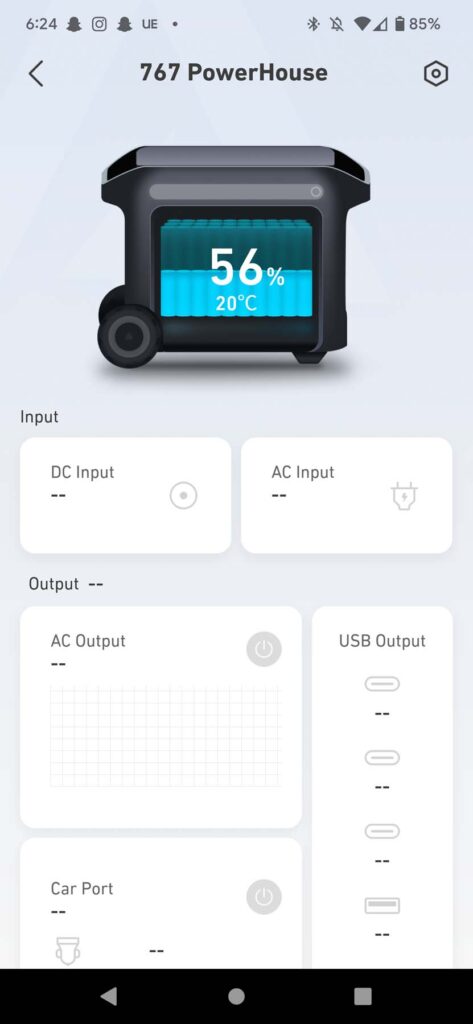
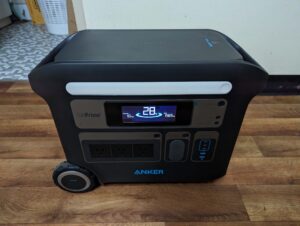



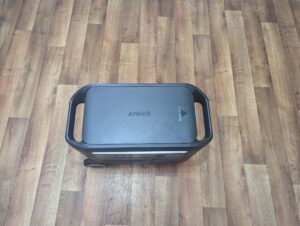
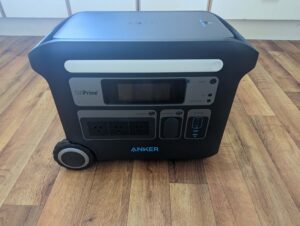


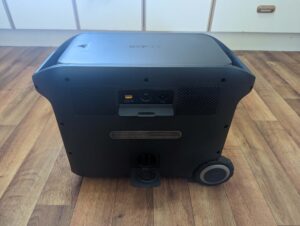


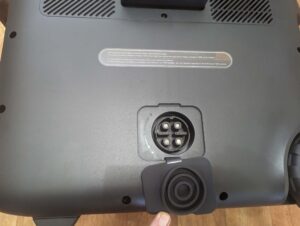

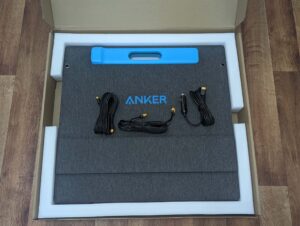

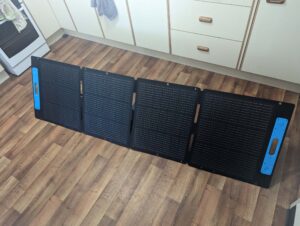
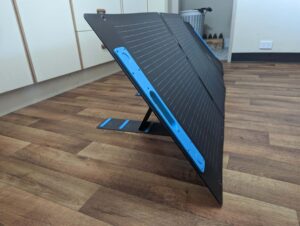
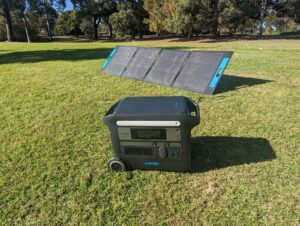
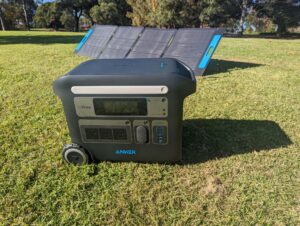
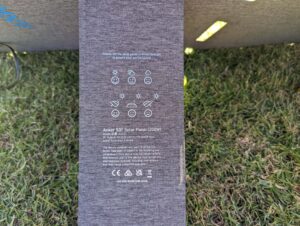


The Anker 767 PowerHouse isn’t something I’ll be rushing out to buy for my sporadic use-case needs. But it has shown me the space I have in my life for a cheaper, more slimline power station. If you’re into camping, travelling or want a high-capacity power station for any other potentially unpowered scenario and aren’t deterred by the steep asking price, the Anker 767 PowerHouse is worth including in your comparisons.
How we review power stations and power banks
Power stations and power banks are effectively the same thing: batteries that store a higher-than-normal capacity for offering extra juice to a range of devices. For power banks, it’s generally smaller devices from smartphones and tablets through to laptops and handheld gaming consoles (like the Steam Deck). And for power stations, it’s those electrical devices that draw more power.
Regardless of whether it’s a power station or a power bank, testing is mostly the same. It starts with a practical overview of the product: the number of ports, the presence of a display, then weight and portability considerations. Then the testing starts. We test power stations and banks with the devices they’re intended for in comparison to the expected capacity estimates from the manufacturer.
Ease-of-use is an important part of these devices, and we particularly like a companion app to help with monitoring. We also test devices in terms of versatility—such as solar charging for relevant products—note any discharging anomalies, and then compare recharge times with manufacturer estimates.
Anker 767 PowerHouse frequently asked questions
Related Articles

